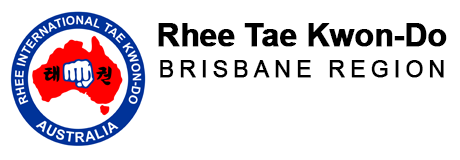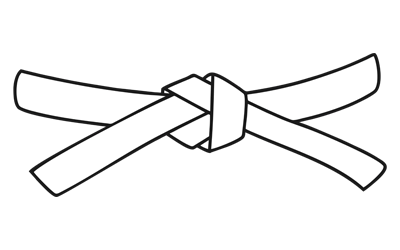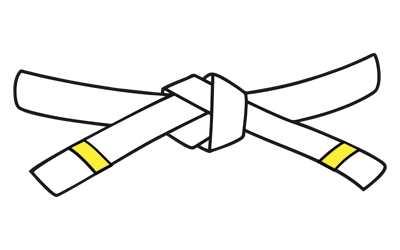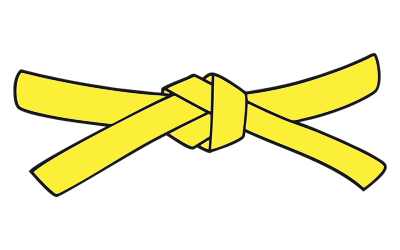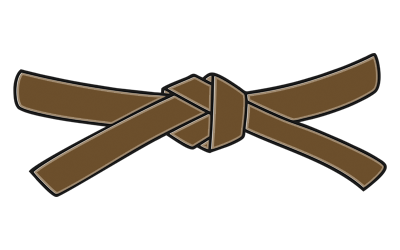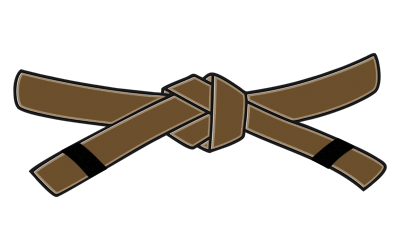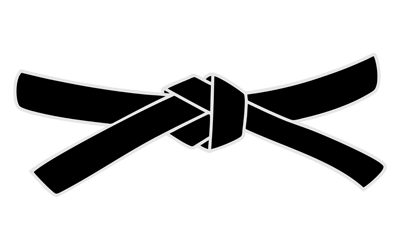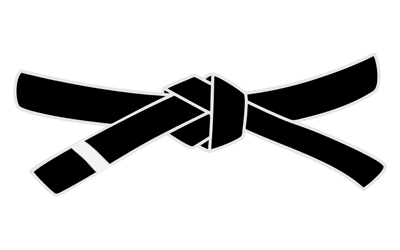For Students
Rhee Tae Kwon-Do has been training students in the art of traditional Tae Kwon-Do since 1970. Unlike many more recent and diluted forms of Tae Kwon-Do taught throughout Australia, as a traditional style, discipline and respect is a critical foundation. We strive to impart respect of self as well as respect of others. With focus and determination Rhee Tae Kwon-Do students will improve their experiences and abilities by forging a sound mind and a sound body.
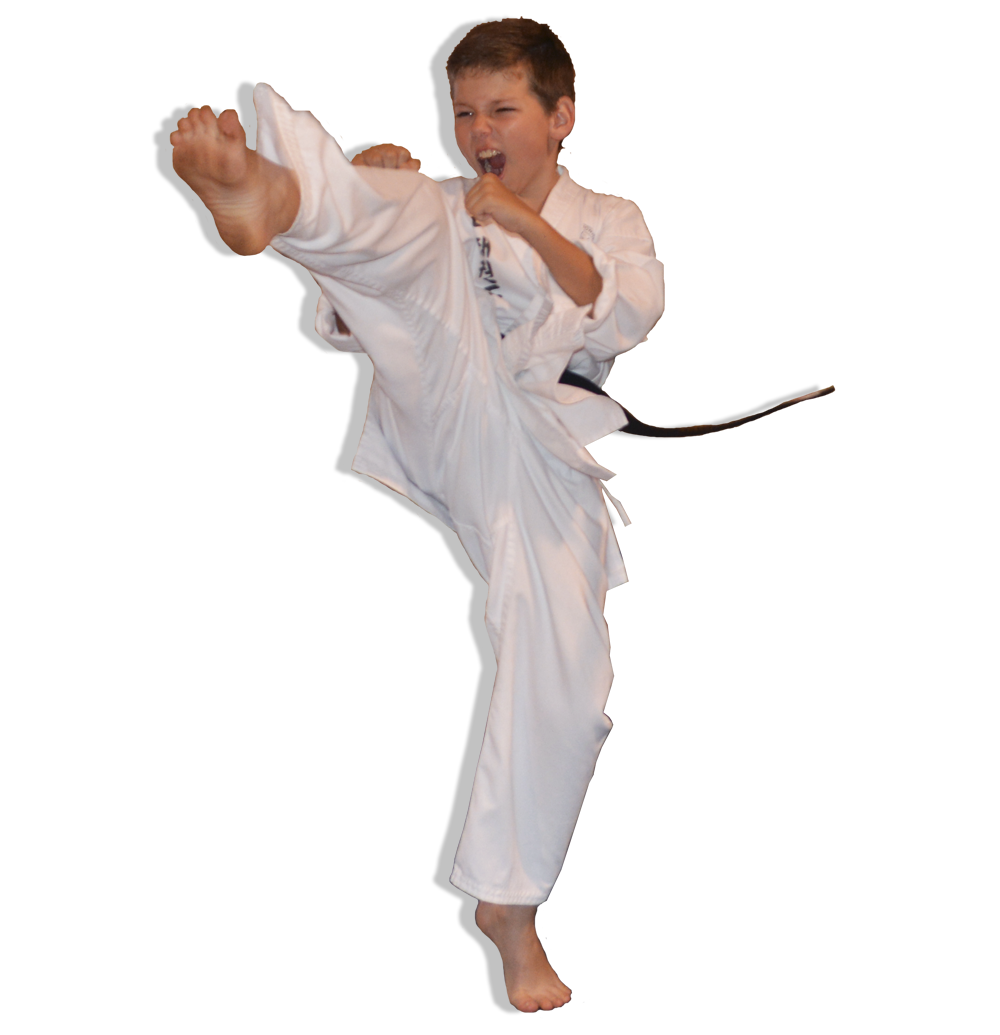
The Rhee Tae Kwon-Do Pledge
The Rhee Tae Kwon-Do pledge is your commitment as a student to uphold the values and virtues of our art. By observing the tenets of Rhee Tae Kwon-Do, and honouring the principles that define our school, the pledge will help serve as a guide to help shape you as a student of Rhee Tae Kwon-Do as well as a member of our community.
The Rhee Tae Kwon-Do Pledge
As a student of Rhee Tae Kwon – Do I solemnly promise:
- To abide by the rules and regulations of the school.
- To obey the instructions of our Instructors
- To cultivate self-discipline and perseverance
- To achieve fitness and good health.
- To strive always to be modest, courteous and respectful to members senior to me.
- To put the Art into use only for self-defence and defence of the weak, and never to show off my knowledge of the Art.
- To endeavour constantly to improve myself – both mentally and physically – through my study of the Art of Rhee Tae Kwon-Do.
- To respect and obey my parents, be courteous to my elders, and strive to set an example as a good citizen.
- To respect the laws of the country at all times.
- To be honourable in my dealings with all my fellow members.
Rhee Tae Kwon-Do Students can find a copy of the pledge in their Blue Membership Book.
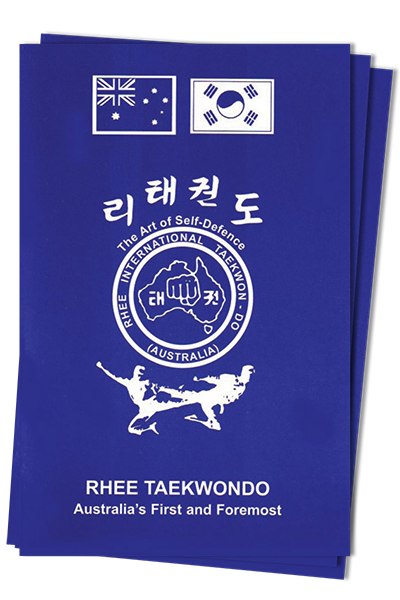
‘Kup’ is a Korean word meaning level or grade.
A ‘kup’ is a rank of colour belt used to signify your ‘grade’, or ‘rank’. You may also see it written as geup or gup.
Hyung. Hyeong. Pumsae. Teul.
There are many different names but all of these mean “pattern” in the Korean Martial Arts of Tae Kwon-Do and Tang Soo Do. While we often refer to them simply as “patterns” in class, Rhee Tae Kwon-Do uses “hyung” as it is the preferred term for teaching Tae Kwon-Do in it’s traditional form.
Patterns, or Hyung, are the stepping stones on your path through Rhee Tae Kwon-Do. Each grade has its own pattern with unique techniques for that grade. Practice your patterns often with focus and determination and you will experience your ability increase. Pattern knowledge is essential in helping you become the best student you can be. Patterns are taught in class by your instructor. We do not post videos or images of our patterns on the internet and discourage students to look online as you may learn incorrect movements. All Rhee Tae Kwon-Do patterns are unique forms of traditional hyung and by using videos from other schools you will learn bad habits or someone else’s interpretations of the pattern. If you are unsure, always ask your instructor or a higher rank for assistance.
10th Kup
White Belt
Saju Chirugi
Pattern Origins
The first belt of the beginner is WHITE, which indicates clarity and purity. It symbolises innocence and an uninhibited mind. Thus assuming that the person has no prior knowledge of the art and training.
This Hyung lays the foundation of future Hyung to come. This is the most basic Hyung providing the beginner with understanding and combining the fundamental movements at different oriented angles to develop the coordination and balance of the execution. The Hyung is divided into two parts of duplicated movements to ensure the equal balance of the body development. It consists of simple basic attack and defence situations. Although there is lack of variation of technique, the practitioner is given more opportunity to concentrate on precision skills in execution and good control of power and balance, together with correct breathing.
9th Kup
White Belt / Yellow Tip
Chon-Ji
Pattern Origins
“Chon-Ji” means literally “the Heaven, the Earth”. It is, in the Orient, interpreted as the creation of the world or the beginning of human history, therefore, it is the initial pattern learnt by the beginner. This pattern consists of two similar parts; one to represent the Heaven and the other the Earth. It is said that the Pattern was named after Lake Chon-Ji, a beautiful lake in North Korea with water so clear that you literally see the Heaven meeting the Earth.
This is considered to be the first official constructed Hyung after the initial basic Hyung previously (Saju Chirugi). It has two distinct parts combined symbolising heaven and earth – the creation of the world or universe – as the word Chon-Ji implies. The two parts in the Hyung consist of a lower section block and medium punch, and an inner forearm block and medium punch. These movements are executed in different directions to cover all points of the earth.
8th Kup
Yellow Belt
Tan-Gun
Pattern Origins
The colour YELLOW signifies the earth and the sun, where the seed is expected to take root. This indicates that the practitioners foundation is laid to develop the knowledge of the art. Nothing can be achieved without a strong and good foundation.
Tan-Gun was the legendary founder of the kingdom of Korea in the year 2333 B.C. Today on October 3rd is a national holiday to commemorate Tan-Gun because of his greatness and significant historical importance in maintaining and protecting the kingdom and its cultural values through the turbulent years of the Silla, Koyon and Lee Dynasties. This is the mythical story of the birth of Tan-Gun, the son of Hwan Ung who became a man that came from heaven and changed a bear to a woman whom he married.
7th Kup
Yellow Belt / Green Tip
To-San
Pattern Origins
Chang Ho Ahn (1876-1938), known as To-San, was the son of a farmer who at the age of 18 years joined the independence movement. His aim was to promote free choice in education, culture and speech. These activities, together with gaining back independence were carried out underground during the Yi Dynasty in 1910 when the Japanese Empire ruled. His outstanding effort came to an end when he was captured by the Japanese and eventually died in prison. He literally gave his life to the cause and was a proud member of the Korean Independence Movement.
6th Kup
Green Belt
Won-Hyo
Pattern Origins
The colour green indicates life and growth. As new leaves start to develop so as the strength and knowledge of the practitioner’s training gains momentum. The movements and techniques start to develop with purpose.
During the Silla Dynasty (686 AD) Buddhism was introduced to its people by a prominent monk called Won Hyo. He was well known not only for his scholastic achievement but also for a greater accomplishment in helping and taking care of the poor and suffering people. He felt comfortable amongst the underprivileged people and often sang and danced for them. He was obviously well received and respected everywhere he went.
5th Kup
Green Belt / Blue Tip
Yul-Kok
Pattern Origins
During the Yi Dynasty there was a great philosopher and scholar called master Yi I (1536-1584 AD). Known as Yul-Kok he was dubbed the “Confucius of Korea”. Yul-Kok’s exceptional intelligence was well served in many governmental postings and on retirement he constantly advised on various social and governmental affairs. The diagrammatic representation of the Hyung and the number of movements represents his birth place and him being an outstanding scholar.
4th Kup
Blue Belt
Chung-Gun
Pattern Origins
The colour blue represents the plant’s growth reaching towards the big blue sky. As the plant matures so do the skills and techniques of the practitioner. The plant becomes a tree – the training methods and the various movements become more meaningful and adaptable.
Nothing demonstrates true patriotism more than to die for one’s country. This was exactly what Ah Chung-Gun did. He sacrificed his life by assassinating an important Japanese Governor-General in Korea during the Japanese occupation – Hirobumi Ito on the 26th October at the Halbin railroad station. Chung-Gun was captured and executed at the age of 32 which now represents the number of movements in the Hyung.
3rd Kup
Blue Belt / Brown Tip
Toi-Gye
Pattern Origins
Yi Hwang (1501-1570) was known as Toi-Gye, a brilliant scholar specialising in Confucianism (Joo Jo Hak). Toi-Gye’s own interpretation of Confucius (Toi-Gye Hak) is well recognised both in the eastern and western worlds. His great authority on intellectual theories has earned him many disciples through the Do San Learning Institute founded by himself. The 37 movements in the Hyung represent his birthplace on the 37° latitude.
2nd Kup
Brown Belt
Hwa-Rang
Pattern Origins
The colour brown signifies the earth where the tree finally roots itself firmly and solidly. This is when the student’s knowledge of the art consolidates and he starts to have full confidence in his achievement and acquirement.
Hwa-Rang youth were famous for their great fighting skills and impervious spirit. Without them the three kingdoms of Korea would not have been unified. During the Silla Dynasty (1350 years ago) a group of youth sprang up with high moral and patriotic ideas and devoted to strict discipline and unparalleled training skills – bodies and spirits – calling themselves Hwa-Rang Do. Membership to this organisation was most selective, the young candidates must prove to be men of character, virtue and conscience; and should be educated and of noble birth. Today the Hwa-Rang spirit lives on – used as the motto for youth.
1st Kup
Brown Belt / Black Tip
Chung-Mu
Pattern Origins
Admiral Yi Sun-Sin known as Chung-Mu was noted for his invention of the armoured battleship – Kobukson (the turtle boat) during the Yi Dynasty. In 1592 when war broke out between the Japanese Empire and the Yi Dynasty, Admiral Yi lead his Kobukson to victory and reigned supreme over the sea for several years. Unfortunately he was sentenced to death after being found guilty of plotting against another commanding officer, then later pardoned by the king. Admiral Yi died at the age of 54 during another sea battle against the Japanese. Today he is still admired in Korea as a true protector of his country.
JNR Black Belt
Black Belt
Gwang-Gae
Pattern Origins
Black is the opposite to white; thus from a novice to an “expert”. It represents a good degree of proficiency of the art. It also indicates the endless universe where development of technique is limitless. This is the stage where the practitioner has the capacity and opportunity to explore the “timeless” endeavour one strives to reach.
Gwang-Gae-T’o Wang was the 19th king of the Koguryo Dynasty. Being young and ambitious and believing in expansionism, his success in conquering nearby land holdings increased the size of his empire. The most outstanding achievement was the regaining of lost territories from Manchuria. He reigned for 39 years as represented by the 39 movements in the Hyung.
Black Belt
Black Belt / 1st Dan
Gwang-Gae / Po-Eun
Pattern Origins
Po Eun is the pseudonym of a fifteenth century Korean poet and scientist named Chong Mong Chu. Chong is revered as a great patriot, having penned the famous lines “I would not serve a second master, though I might be crucified a hundred times.” The movement in this form denotes his unerring loyalty to the king and country towards the end of the Koryo Dynasty.
Contact Rhee Tae Kwon-Do Brisbane Today
Postal Address
PO Box 126 Chermside Sth, QLD 4032
